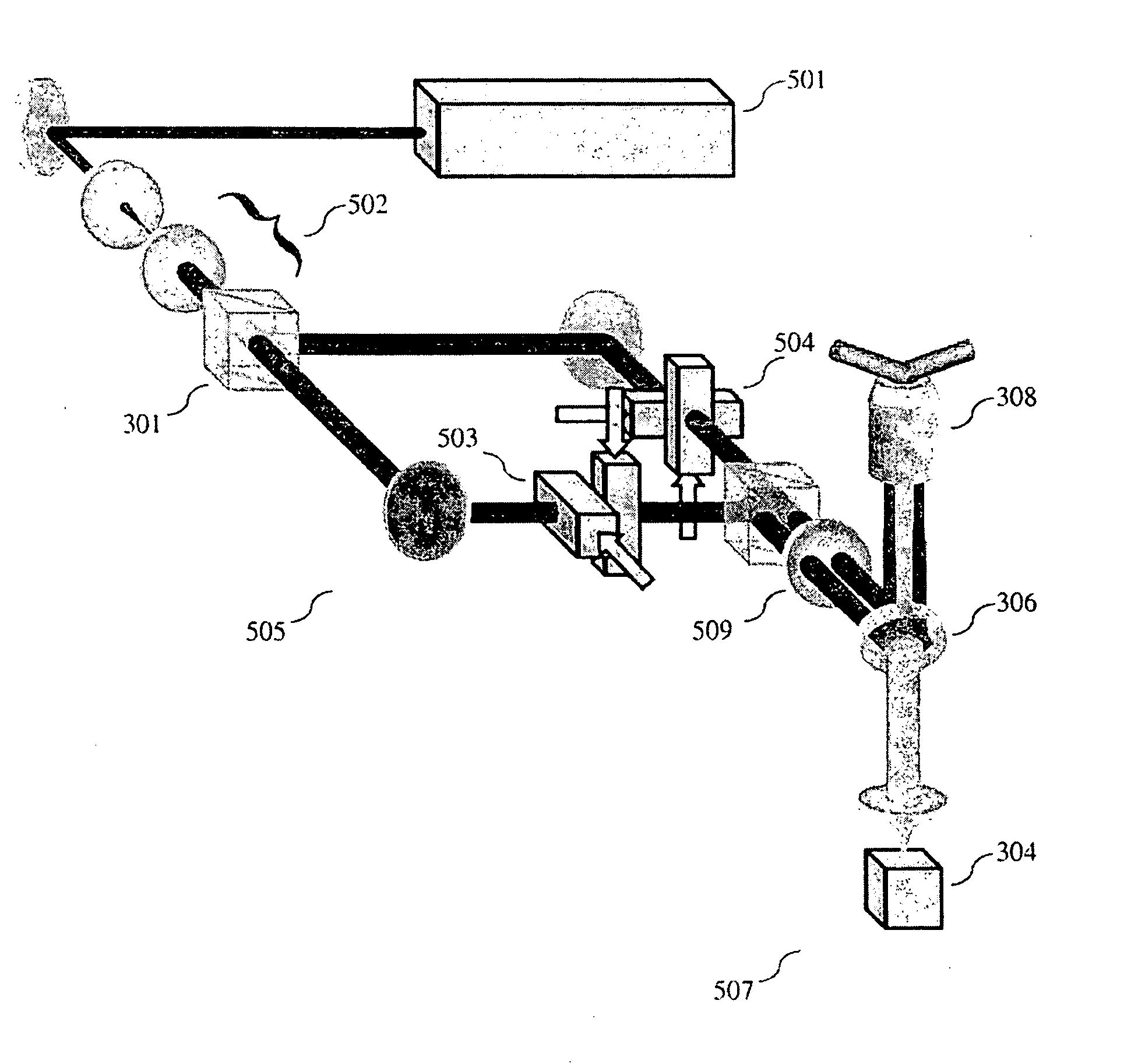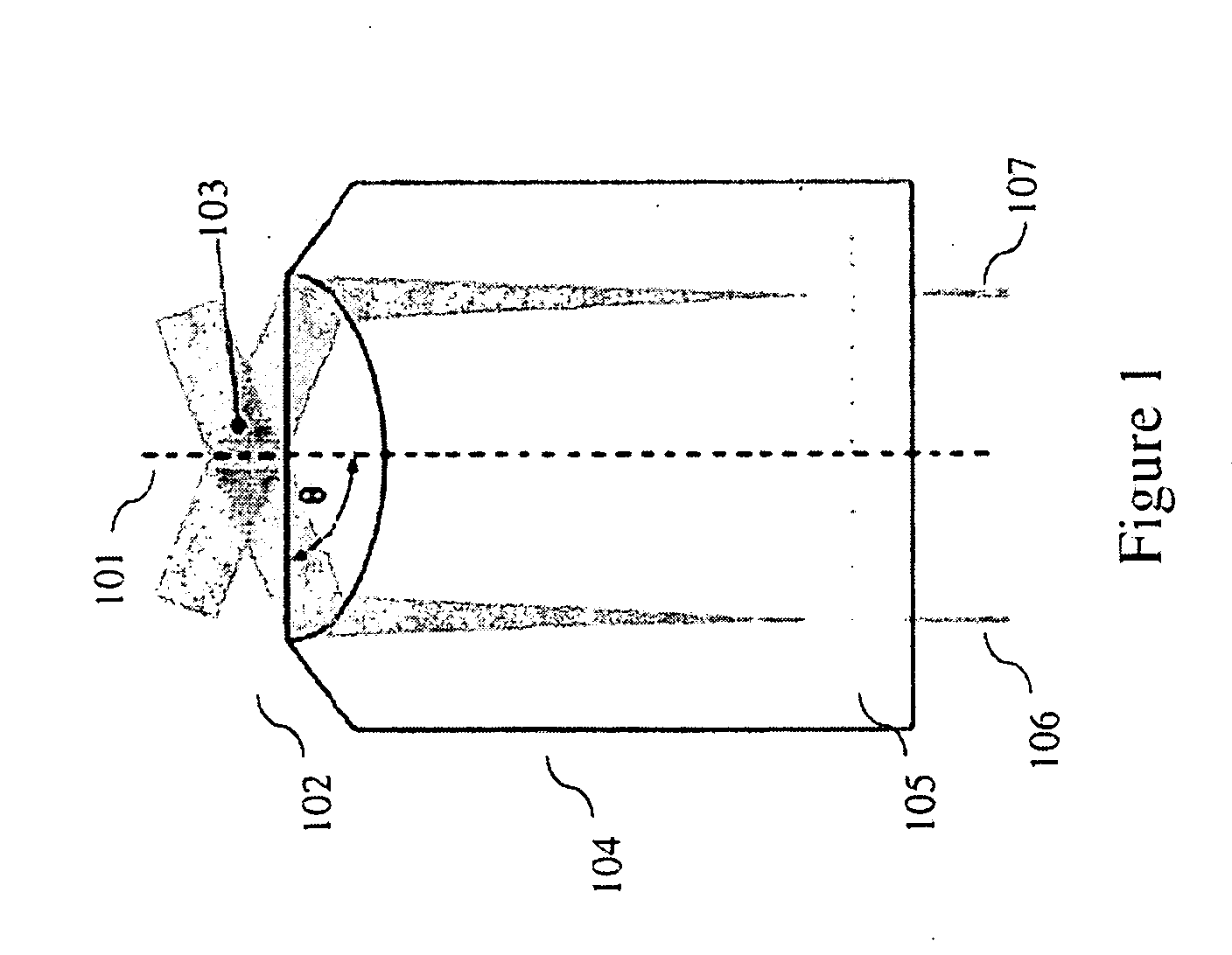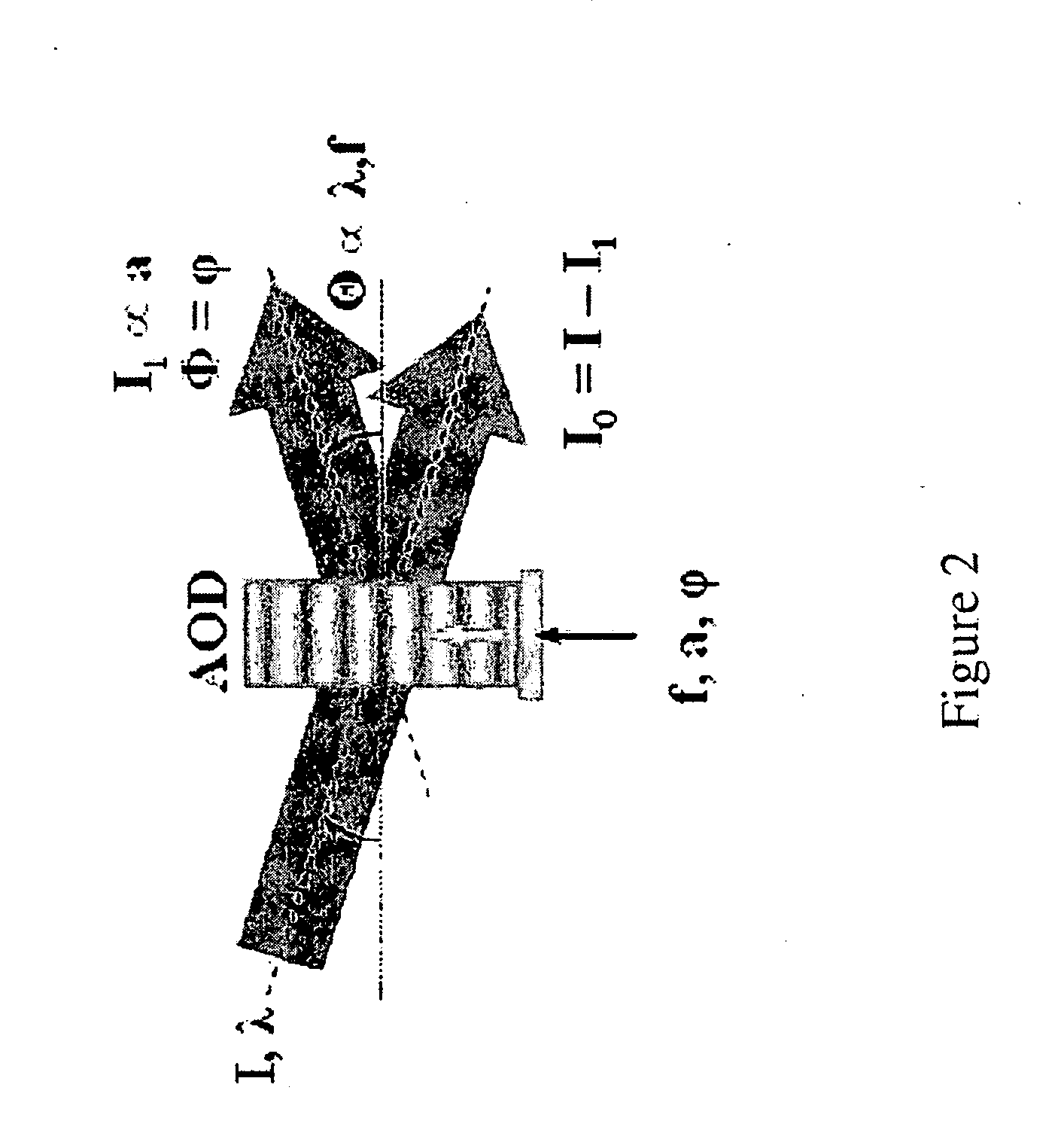Method and apparatus for enhanced resolution microscopy of living biological nanostructures
a biological nanostructure and enhanced resolution technology, applied in the field of imaging, can solve the problems of limited spatial resolution of such far-field microscopy, inability to resolve conventional light microscopy, and damage to the photon surface,
- Summary
- Abstract
- Description
- Claims
- Application Information
AI Technical Summary
Benefits of technology
Problems solved by technology
Method used
Image
Examples
example 1
1D SWM—Imaging of 100 nm Diameter Fluorescent Beads
[0091]The resolution of the SW-TIRFM system was tested by imaging fluorescent beads with a known diameter of 100 nm, which is below the resolution limit of standard microscopy.
[0092]Beads suspended in water were delivered to a polylysine coated coverslip, which caused a portion of the beads to adhere to the coating. Utilizing TIR illumination improved the axial selection, which resulted in images of high contrast, with very bright beads adjacent to the glass / water interface and a dark background undisturbed by non-adhered beads. Both TIRFM and reconstructed SW-TIRFM images of the same 100 nm bead are shown in FIG. 14A and FIG. 14B, respectively. The full width at half maximum (FWHM) of the intensity profile taken of the TIRFM image was 265 nm (FIG. 14D). The intensity profiles taken in two orthogonal directions, normal and parallel to the fringes of the reconstructed SWM image (FIG. 14E) had a FWHM of approximately 100 nm (x-profile...
example 2
1-D SWM—Biological Structures (Nanotubes)
[0094]SWM vas applied to image biological nanotubes, i.e., membrane tethers between living cells. The formation of such membrane tethers is a general phenomenon that occurs during cell adhesion, communication and spreading. Previously, direct measurement of tether diameters had not been possible with light microscopy, since they are considerably below the lateral resolution limit of conventional light microscopy. Scanning electron microscopy (SEM) measurements performed on fixed cells have suggested that tethers are 50-200 nm thick [Rustom, A., Saffrich, R., Markovich, I., Walther, P., and Gerdes, H. H., “Nanotubular highways for intercellular organelle transport,”Science 303(5660):1007-1010 (2004)].
[0095]An SWM setup was used to determine the diameter of membrane tethers that formed spontaneously between cultured human embryonic kidney (HEK) cells. These tethers stretch between interconnected cells and are up to several cell diameters in len...
example 3a
2-D SWM—Imaging of 100 nm Diameter Fluorescent Beads
[0097]An image of the specimen illuminated by the SW was formed by utilizing the 2D SWFM illustrated in FIG. 5 and was enlarged and captured by the detector unit 507, which was a cooled CCD camera 304. To obtain 2D resolution enhancement, multiple images have to be acquired while the sub-resolution structure of interest is illuminated with SW patterns of different and angular orientations. Numerical simulations indicated that three different orientations of SW pattern about optical axis are sufficient to achieve a nearly isotropic effective PSF. [See Chung, et al. 2007]. Data involved acquiring a sequence of three images at three SW phases (0°, 120°, 240°) and angular orientation (0°, 60°, 120°), resulting in a total of nine images. Preliminary results of generating and controlling nine such SW patterns with AODs are illustrated in FIG. 16.
[0098]Despite the use of large (10 mm) aperture AODs, the total time to change between the ni...
PUM
| Property | Measurement | Unit |
|---|---|---|
| wavelength | aaaaa | aaaaa |
| diameter | aaaaa | aaaaa |
| frequency | aaaaa | aaaaa |
Abstract
Description
Claims
Application Information
 Login to View More
Login to View More - R&D
- Intellectual Property
- Life Sciences
- Materials
- Tech Scout
- Unparalleled Data Quality
- Higher Quality Content
- 60% Fewer Hallucinations
Browse by: Latest US Patents, China's latest patents, Technical Efficacy Thesaurus, Application Domain, Technology Topic, Popular Technical Reports.
© 2025 PatSnap. All rights reserved.Legal|Privacy policy|Modern Slavery Act Transparency Statement|Sitemap|About US| Contact US: help@patsnap.com



